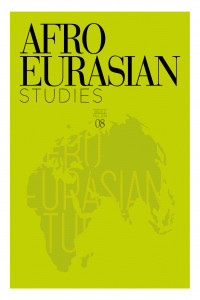A Comparative Analysis of Economic Policies and Performance of the OPEC and Non-OPEC Countries of the Middle East Region since the 1980’s
A Comparative Analysis of Economic Policies and Performance of the OPEC and Non-OPEC Countries of the Middle East Region since the 1980’s
Comparative Economic Performance, OPEC, Oil Prices Middle East.,
___
- Department of Economics, King Saud University, Riyadh. Al-Farhan, F. (2003). OPEC Policies and the Economic Development of Member States
- The Saudi Arabian Experience and what is Needed in the 21st Century, unpublished manuscript. Chun, C. K. S. (2010). Do Oil Exports Fuel Defense Spending? http://www.StrategicStud- iesInstitute.army.mil/
- Coury, T. (2009). Oil, Labor Markets, and Economic Diversification in the GCC: An Empiri- cal Assessment. Dubai School of Government, Dubai, UAE.
- Economy Watch Economic Statistics Database (http://www.economywatch.com/eco- nomic- statistics/country/). Gelb, A. (2010). Economic Diversification in Resource Rich Countries. Center for Global De- velopment, Algiers.
- International Financial Statistics database (extracted from International Monetary Fund) Looney, R. E. (1994). “The Impact of Defense Expenditure on Industrial Development in the Arab Gulf.” Middle Eastern Studies, Vol.30, No.2, April, pp. 377-384.
- The World Bank Indicators & data bank (http://databank.worldbank.org/ddp/home.do The World Bank, (2011). World Development Indicators, Washington, D.C.: The World Bank, Table 2.9.
- Wikipedia, (2011). List of Countries by Population.(http://en.wikipedia.org/wiki/List.)
- WTRG Economics, (2011). History of Illinois Basin Posted Crude Oil Prices.
- Zaman, M. R. (2000). “Trade, Capital Flows, and Economic Vulnerability of the Major
- Oil Exporting Countries of the Middle East”. Journal of Global Awareness, Pro- ceedings of 2000 Annual Conference, 265-270.
- ISSN: 2147-110X
- Yayın Aralığı: Yıllık
- Başlangıç: 2012
- Yayıncı: Musiad (Independent Industrialists and Businessmen's Association)
Understanding the ‘Arab Spring’: Justice, Dignity, Religion and International Politics
The Nature of Lobbying and Regulation in Turkey
The Concept of “Middle Power” and the Recent Turkish Foreign Policy Activism
Are Sukuk Securities the Same as Conventional Bonds?
Turkey in the World Trading System and the WTO: Activism under Global Challenges and the EU Process
Income Distribution in Europe and its Effect on Investment Priorities
Generalized Formulae for Islamic Home Financing through the Musharakah Mutanaqisah Contracts
